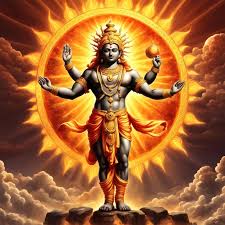
Makara Sankranti Surya Puja is a highly auspicious Hindu ritual celebrated to honor Lord Surya (Sun God), marking his transition into the zodiac sign Makara (Capricorn). This day, usually observed on January 14th, signifies the beginning of Uttarayana—the northward journey of the Sun—which is considered a holy and spiritually uplifting time.
Makara Sankranti is one of the few Hindu festivals based on the solar calendar, and it symbolizes the arrival of longer, warmer days. It also marks the end of winter and the beginning of the harvest season, especially in agricultural communities.
The day begins with an early holy bath, preferably in rivers or sacred water bodies like the Ganga, Yamuna, or Kaveri. After purification, devotees perform Surya Puja by offering Arghya (water offering) to the rising sun, facing east. While offering water, devotees chant Surya mantras like “Om Suryaya Namaha” or recite the Aditya Hridayam to seek blessings for health, energy, and success.
Surya idols or pictures are decorated with kumkum, turmeric, flowers, and naivedyam like sakkare pongal (sweet rice) or til laddus (sesame sweets). Special emphasis is placed on offering sesame seeds, jaggery, and seasonal fruits, which symbolize the warmth of the Sun and the sweetness of life.
Makara Sankranti is also associated with charity and dharma. Devotees engage in annadana (food donation), offering clothes, and helping the needy, believing that such acts on this day bring immense merit (punya).
Flying kites, preparing festive foods, and visiting temples are common customs. The Surya Puja on this day is believed to bring light, positivity, prosperity, and spiritual growth to the devotee’s life.

